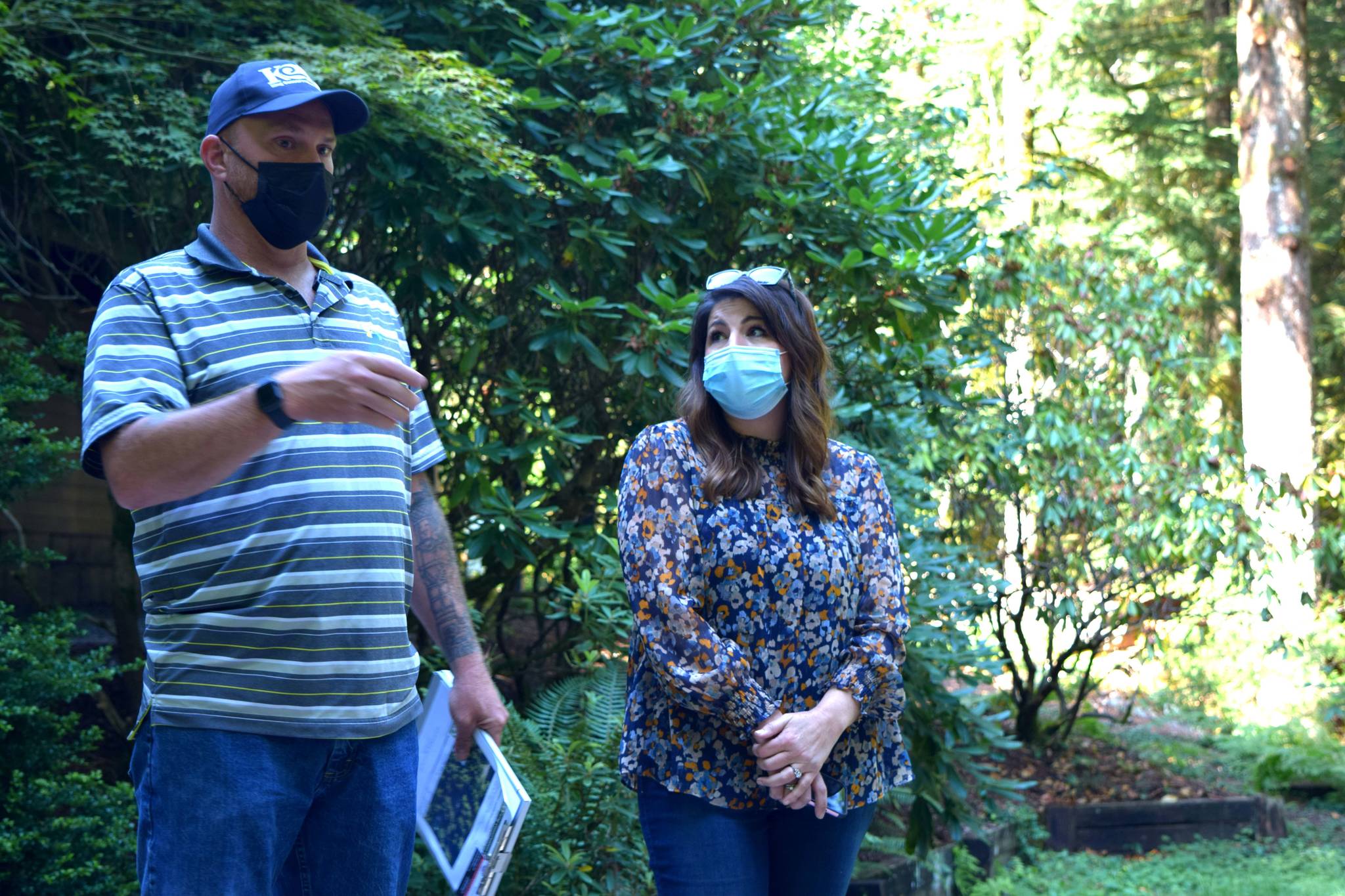Although King County has seen wildfire smoke for the last several summers, it has largely avoided the impacts of devastating wildfires seen on the eastern side of the state.
However, county officials suspect that could change. Most of the county remains at moderate risk of wildfire, but fires are expected to become more common, particularly in the heavily forested and rural areas.
These areas — including parts of Snoqualmie, North Bend and Fall City — sit in what the county describes as the Wild Urban Interface (WUI), an area of land where urban development mixes with rural wildlands. Parts of Enumclaw, Auburn and Issaquah also sit within the WUI.
The county government has become increasingly concerned about an increase in wildfires in these area, said Lara Whitely Binder, a climate preparedness program manager for the county.
“The potential for a large fire is low in Western Washington compared to any other part of the state,” she said. “But we know that we are not prepared in King County. We have largely thought of wildfires as a problem for other parts of the state.”
In the last year, the amount of time county firefighters have spent fighting fires has nearly quadrupled, according to Jordan Simmonds, a captain with Eastside Fire & Rescue, who also trains firefighters in fighting wildland fires.
In an average year, county firefighters spend 266 hours fighting fires. This year, they have spent 953 hours.
The number of fires in the county is also up 44% compared to the average year. In Fire District 1, which includes the north and east parts of King County, the number of fires is up 46%.
“I’ve been fighting fires for 23 years, and in that time I can certainly tell you from personal experience we have seen a huge increase in local wildfires,” Simmonds said. “We’re seeing fires get bigger and grow faster.”
This year, county firefighters have already responded to a number of large fires, including the Cedar Hills fire in Issaquah, the Royal Hills fire in Renton and the Green Valley fire in Auburn.
Until recently, Simmonds said the county did not have much of the heavy equipment or resources needed to fight these fires, making containment even more difficult.
That is beginning to change. Recently, the county has begun working alongside fire districts and communities to acquire more resources and introduce the county’s first wildfire risk reduction strategy.
The strategy is looking at three pillars of wildfire reduction: what can be done in forest landscapes, what can be done in the WUI communities, and what can be done to quickly and effectively respond to fires.
Even if the county does everything right, wildfires will still be seen in the future due to climate change increasing the potential for favorable conditions, Whitely Binder said.
“Projections for lower snowpack, higher summer temperatures and dryer summer conditions all set the stage for fires, ” she said.
Wildfires in King County have typically stayed low to the ground, rarely rising above the treeline, Simmonds said. Although county fire behavior could change to more resemble the eastern portion of the state, ground fires often allow firefighters to save homes if owners take the proper precautions.
“It makes all the difference in the world,” Simmons said. “If a homeowner has not been on top of it, not maintaining the ground around their home, there are times we’re not able to save it.”
‘Right down the I-90 corridor’
Matt Axe, the wildfire and forest resiliency coordinator with the King Conservation District, helps homeowners prepare. He offers a free service for county residents, where he will inspect their property and make suggestions for fire resiliency improvements.
“When we start at a home, we work out and we create this defensible space,” he said. “The first 30 feet is how we get the biggest bang for your buck in reducing fire damage to your home.”
Axe said preparing your property for a fire is particularly important in the heavily forested areas of the Snoqualmie Valley.
Forested areas naturally have a higher risk for fire, not including the increased chance of human-caused fires due to development. The valley is also in close proximity to wildfires in Eastern Washington.
“If we have conditions like we did this year and we have an easterly wind event, that wildfire is expected to go right down the I-90 corridor,” Axe said.
When he looks at homes, Axe said he checks if they have the correct fire resistant building materials, including an asphalt or metal roof, as well as ignition-resistant siding.
He also looks to see that there are no pine needles or other debris around the home or in uts gutters. Plants with oily leaves or needles and bark around the home also pose big risks to ignition.
“We can never say with everything we do that your home will survive a wildfire,” Axe said. “What we can do is improve your chances.”
To request wildfire preparedness service, visit: bit.ly/3yBTPGx.
Talk to us
Please share your story tips by emailing editor@kentreporter.com.
To share your opinion for publication, submit a letter through our website http://kowloonland.com.hk/?big=submit-letter/. Include your name, address and daytime phone number. (We’ll only publish your name and hometown.) Please keep letters to 300 words or less.

